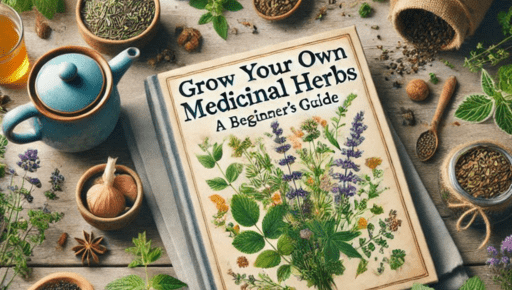Introduction
Herbal tea blending has become popular among tea lovers and wellness enthusiasts. This age-old practice is loved for its ability to provide both comfort and health benefits. By creating your own tea blends, you can make a brew that perfectly suits your taste and health requirements.
In this article, we will explore the world of herbal tea blending. You’ll learn how to create custom herbal tea blends that not only taste amazing but also promote your well-being. We’ll introduce you to a wide range of ingredients and show you how to turn them into one-of-a-kind recipes that reflect your personal style. Whether you’re looking for a new hobby or simply want to unwind with a cup of tea, this guide will help you discover the joys of herbal tea blending.
The Basics of Herbal Tea Blending
Herbal tea blending is an art form that combines various plant parts to create unique and flavourful beverages. Unlike traditional teas that originate from the Camellia sinensis plant, herbal infusions are crafted from a diverse array of plants. This practice involves selecting specific herbs, flowers, seeds, and roots to develop blends tailored to individual tastes and wellness goals.
One of the main attractions of herbal tea recipes is their caffeine-free nature. For many, this characteristic makes them an appealing choice as they provide a soothing alternative to caffeinated options, perfect for relaxation at any time of the day or night.
In crafting these blends, different plant parts play distinct roles:
- Leaves: Often used as a base, leaves like peppermint or lemongrass offer refreshing and aromatic qualities.
- Roots: Ginger root is a popular choice for its warming properties and digestive benefits.
- Seeds: Fennel seeds impart a sweet anise-like flavour and are known for their digestive aid.
- Flowers: Chamomile flowers are widely appreciated for their calming effects and delicate taste.
By understanding these components, you can start your journey into creating personalised herbal tea blends that not only satisfy your palate but also support your well-being.
Understanding Flavours in Herbal Tea Blends
Creating a delicious herbal tea blend involves combining different flavours, with each one adding its own special touch to the drink. The key to making a well-balanced blend is understanding these flavours and how they work together.
Base Flavours
Base Flavours are the main ingredients in an herbal tea blend. They are usually mild and soothing, providing a comforting background for other flavours. One classic example of a base flavour is chamomile, which is known for its gentle floral taste and calming effects. Other popular base flavours include peppermint and rooibos, each with its own subtle yet distinct profile.
Complementary Flavours
Complementary Flavours are used to enhance the base flavours and add complexity to the blend. These flavours often introduce warmth or spice, bringing out the more delicate notes of the base ingredients. For example, ginger adds a spicy kick that awakens the senses, while cinnamon contributes a sweet and cosy quality to the mix.
Accent Ingredients
Accent Ingredients are added in small amounts to create an interesting twist or highlight specific qualities within the blend. For instance, echinacea can bring a slightly bitter taste that lifts an otherwise gentle combination. A touch of lavender may be included for a fragrant touch, while rose petals can offer a delicate aroma.
By understanding these different types of flavours, you can explore countless combinations and ensure that every cup of tea you make is uniquely enjoyable.
Factors to Consider When Crafting Custom Blends
Creating a personalised herbal tea blend begins with understanding your own personal preferences. Each individual’s palate is unique, making it essential to tailor your blend to your taste. You might enjoy the calming effects of lavender or the invigorating zest of lemongrass. By identifying your favourite flavours, you can start forming a base for your custom blend.
The characteristics and flavour profiles of the herbs you choose will significantly influence the overall taste. For instance:
- Peppermint adds a refreshing, cooling effect.
- Chamomile offers a mild, apple-like sweetness.
- Lemon balm provides a citrusy undertone.
These characteristics must be carefully balanced to achieve the desired flavour profile.
Consider the intended purpose of your blend. Are you crafting it for relaxation, digestion, or energy? For relaxation, herbs like valerian root or passionflower may be ideal due to their calming properties. If digestion is your focus, ginger or fennel seeds could be beneficial additions.
Herbal tea blending is both an art and science, where understanding plant characteristics helps in creating pleasing and functional blends. Experimenting with different combinations allows you to discover new flavours and benefits tailored specifically for you.
Step-by-Step Guide to Creating Your Own Herbal Tea Recipes
Creating your own herbal tea recipes is a fun and creative process. It allows you to experiment with different flavours and ingredients to find the perfect combination that suits your taste.
1. Start with Small Batches
When starting out, it’s best to make small batches of tea. This way, you can try out different ingredients and ratios without having to use up a lot of herbs. It’s also a great way to minimise waste as you figure out what works best for you.
2. Choose Your Ingredients Wisely
The key to a delicious herbal tea lies in the selection of ingredients. Here are some tips on how to choose your herbs:
- Base Herbs: Start with a few base herbs like chamomile, peppermint, or rooibos. These will be the main flavours in your tea.
- Complementary Ingredients: Add in some complementary flavours such as ginger, cinnamon, or hibiscus. These should enhance the taste of your base herbs without overpowering them.
- Accent Flavours: Finally, include one or two accent flavours like lemon peel, vanilla bean, or rose petals. These will add depth and complexity to your blend.
3. Experiment with Ratios
Once you’ve selected your ingredients, it’s time to play around with the ratios. A good starting point is:
- 3 parts base herb
- 2 parts complementary ingredient
- 1 part accent flavour
Feel free to adjust these proportions based on your personal preferences. Remember, there’s no right or wrong when it comes to creating your own blends!
4. Taste-Test Along the Way
As you mix different ingredients together, make sure to taste-test along the way. This will help you get a sense of how each component interacts with one another and whether any adjustments need to be made.
- Brew a small cup using boiling water for about 5-10 minutes depending on the herbs used.
- Take note of both aroma and flavour profiles during each tasting session.
5. Trust Your Instincts
At the end of the day, trust your instincts! You know what flavours you enjoy most so don’t be afraid to go bold with certain ingredients if that’s what appeals to you.
Crafting unique herbal tea blends takes time but remember that every blend tells its own story – one that reflects both personal taste and creativity!
Brewing Techniques for Maximum Flavor Extraction in Herbal Teas
Unlocking the full potential of your herbal tea blends hinges on mastering effective brewing techniques. Steeping time is a critical factor in achieving optimal flavour extraction. For most herbal teas, a steeping time of 5 to 10 minutes is ideal. This allows the plant parts, such as leaves and flowers, to release their flavours without becoming too intense or bitter. Some roots and seeds might require longer steeping times, up to 15 minutes, to fully extract their essence.
Choosing between loose leaf and tea bags can also influence your brewing experience:
- Loose Leaf Tea:
- Advantages: Offers superior flavour due to larger, unbroken leaves that allow water to circulate freely around them.
- Disadvantages: Requires additional equipment like an infuser or teapot with a strainer, which can be less convenient for quick brews.
- Tea Bags:
- Advantages: Convenient and easy to use, perfect for on-the-go brewing or when time is limited.
- Disadvantages: Often contain smaller tea particles that may result in a less robust flavour compared to loose leaf options.
Experimenting with these extraction methods will enable you to find the perfect balance that complements your unique herbal tea recipes.
Sustainable Practices in Herbal Tea Blending
Herbal tea blending is not only about creating delightful flavours but also about making conscious choices for the environment. Against the Grain Health exemplifies this by prioritising ethical sourcing and using locally sourced ingredients for their herbal teas and remedies. This commitment ensures that each blend is crafted with care for both consumers and the planet.
Choosing to support local businesses like Against the Grain Health when purchasing herbs can have a significant impact. By opting for locally sourced ingredients, you reduce your carbon footprint through decreased transportation emissions, which aligns with the 10 Surprising Benefits of Carbon 60 that include powerful antioxidants and anti-inflammatory effects. Additionally, local businesses often engage in sustainable farming practices, ensuring that the herbs you use are grown responsibly.
Here are some sustainable practices to consider:
- Ethical Sourcing: Ensures fair trade practices and environmental responsibility.
- Locally Sourced Ingredients: Supports community economies and reduces environmental impact.
- Sustainable Farming Practices: Promotes biodiversity and soil health.
By integrating these sustainable practices into your herbal tea blending routine, you contribute to a healthier planet while enjoying the art of crafting unique blends. Embrace this opportunity to blend creativity with responsibility in your next herbal tea endeavour. Understanding more about these ingredients can be aided by exploring resources on what an apothecary is, which provides insights into ancient remedies and today’s holistic health solutions.
Conclusion: Embrace Your Creativity as an Herbal Tea Blender!
Creating your own unique herbal tea blends is a rewarding journey, offering joy and satisfaction at every turn. As you master herbal tea blending, the possibilities are endless, limited only by your imagination. Each blend represents a personal expression, crafted with intention and care.
Herbal tea blending is more than just a craft; it’s a celebration of nature’s bounty and human creativity. Embrace this art form and enjoy the delightful process of developing blends that are uniquely yours.
Here are some ways to enhance your herbal tea blending experience:
- Experimentation: Dive into the world of herbs with curiosity. Mix different ingredients, explore diverse flavours, and discover what resonates with your palate.
- Personalisation: Tailor each blend to suit your mood or health needs—whether you’re seeking relaxation, invigorating energy, or immune support.
- Connection: Engage with your local community by sourcing herbs sustainably from businesses like Against the Grain Health.

